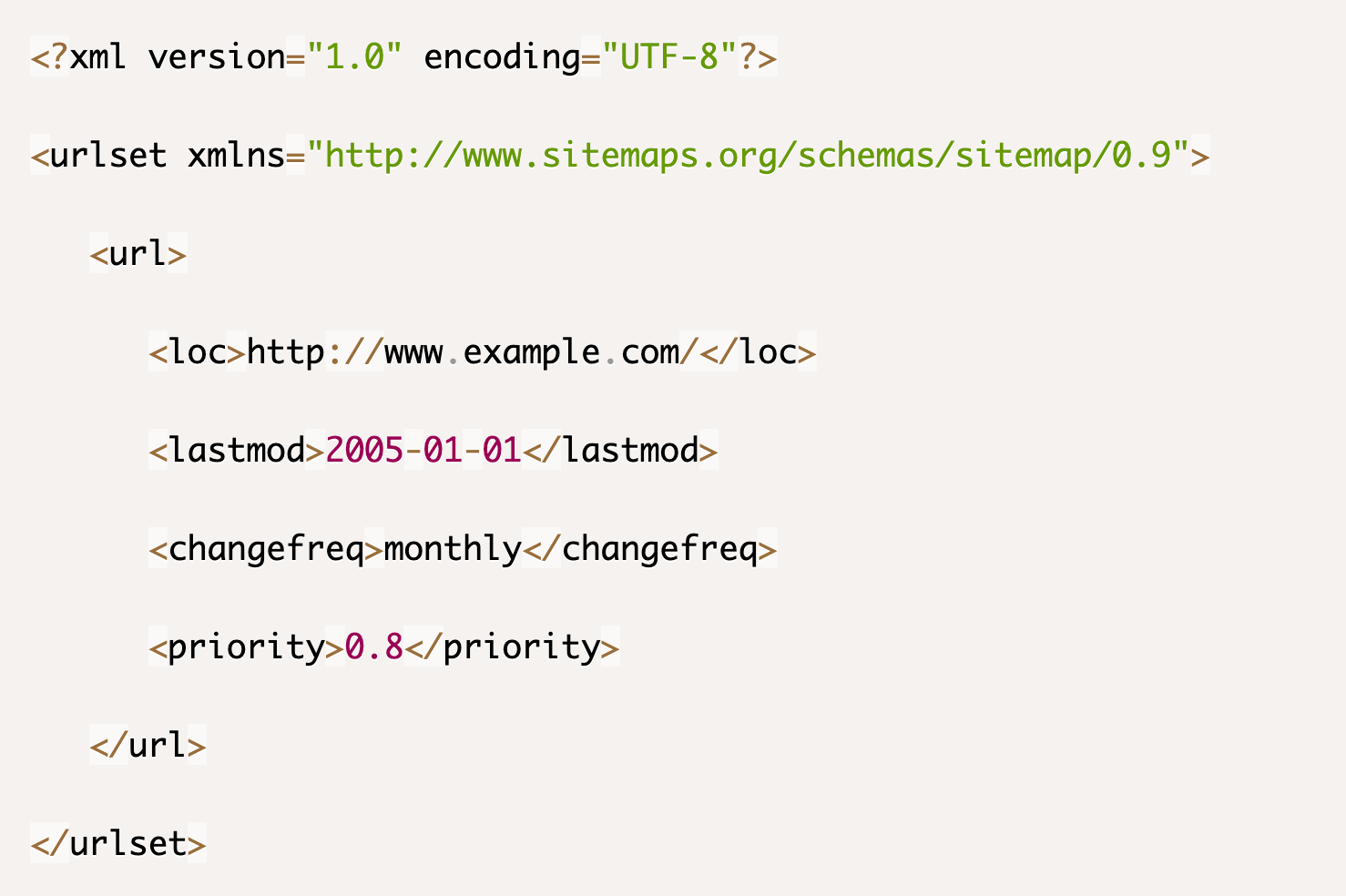What is a Sitemap?
In Search Engine optimization (SEO) ‘s intricate realm, Sitemaps are crucial in guiding Search Engine crawlers to discover and index your website’s content efficiently. Particularly for WordPress websites, Sitemaps are essential tools that facilitate seamless communication between your website and Search Engines. By optimizing your WordPress Sitemap, you can ensure that your website’s valuable content is effectively identified and showcased in search results.
Understand the significance of a Sitemap
<?xml version="1.0" encoding="UTF-8"?>
<sitemapindex xmlns="http://www.sitemaps.org/schemas/sitemap/0.9">
<sitemap>
<loc>http://www.example.com/sitemap1.xml.gz</loc>
<lastmod>2004-10-01T18:23:17+00:00</lastmod>
</sitemap>
<sitemap>
<loc>http://www.example.com/sitemap2.xml.gz</loc>
<lastmod>2005-01-01</lastmod>
</sitemap>
</sitemapindex>
Sample XML Sitemap
A Sitemap is a structured XML file that outlines the hierarchy and organization of your website’s content, providing a clear roadmap for Search Engine crawlers to navigate and index your pages. Search Engines like Google and Bing rely on Sitemaps to efficiently discover and understand your website’s content.
Generate and Host your Sitemap
WordPress websites automatically generate an XML Sitemap, typically located at [your-website-URL]/sitemap.xml. However, it’s essential to ensure this file is accessible to Search Engines. Submit your Sitemap to Google Search Console and Bing Webmaster Tools to do this.
You can assign priority values to indicate the relative importance of different pages on your website. This helps Search Engines prioritize crawling and indexing the pages that you consider most valuable.
Optimize Sitemap for large websites
1. Improved Indexing Efficiency:
2. Streamlined Sitemap Updates:
3. Scalability for Future Growth:
- Identify Page Types: Categorize your website’s pages based on their type, such as blog posts, product pages, category pages, and static pages.
- Create Individual Sitemaps: Generate separate XML Sitemaps for each category of pages, ensuring that each Sitemap remains within the acceptable size limit.
- Link Sitemaps: Include a reference to each Sitemap within the main Sitemap, creating a comprehensive index of all Sitemap segments.
- Submit to Search Engines: Submit each Sitemap to the Search Console, ensuring that Search Engines know all Sitemap segments.
Monitor and Update your Sitemap regularly
Utilize Sitemap plugins
- Google XML Sitemap Generator: This plugin is popular for its simplicity and effectiveness. It automatically generates and updates your Sitemap, pings Search Engines to notify them of changes and allows you to exclude specific pages from your Sitemap.
- Yoast SEO Premium: While Yoast SEO is primarily known for its SEO optimization features, the Premium version includes a powerful Sitemap generator. It provides advanced options for customizing your Sitemap, such as controlling the frequency of updates and specifying the priority of your pages.
- Rank Math: Rank Math is another comprehensive SEO plugin that offers a robust Sitemap generator. It includes features like automatic Sitemap updates, pinging Search Engines, and the ability to exclude pages and categories from your Sitemap.
Test and validate
-
XML Sitemap Validator: This online tool allows you to validate the structure and syntax of your Sitemap. It checks for common errors, such as missing required elements and invalid URLs, and provides detailed reports on any issues it detects.
-
Search Console Sitemap Inspector: Google Search Console offers a built-in Sitemap inspector tool. It allows you to test your Sitemap and identify any errors that may prevent Search Engines from indexing your content.
-
Bing Webmaster Tools Sitemap Validator: Bing Webmaster Tools also provides a Sitemap validator tool. It is similar to Google Search Console's tool and helps you identify any errors that may affect your website's visibility in Bing search results.
-
Screaming Frog SEO Spider: Screaming Frog SEO Spider is a powerful desktop application that can crawl your website and identify various SEO issues, including Sitemap errors. It provides detailed reports and allows you to export data for further analysis.
-
Sitebulb Sitemap Generator & Validator: Sitebulb is another desktop application that offers Sitemap generation and validation capabilities. It can crawl your website, create a Sitemap, and check for errors, making it a versatile tool for Sitemap optimization.
Internal linking
Combine Sitemaps with Robots.txt
Sitemap: [your-website-URL]/sitemap.xml
Disallow: /login/
Disallow: /admin/
Conclusion
- Consult SEO Experts
If you need help optimizing your WordPress Sitemap, seek advice from experienced SEO experts!
Useful tags
WooCommerce vs. Shopify
Adobe Xd vs. Sketch
15 top best Elementor addons
How to create a Custom WordPress Widget?
Wix vs. WordPress
WPBakery vs. Elementor
How can you boost the sale on your E-commerce website?
How to edit Functions.php in WordPress?
How to disable Right-Click in WordPress?
13 Golden Metrics for your E-commerce website!
-
Written by: Alex Neil
- Alex, a Wordune team member passionate about helping people and leading projects. I specialize in Web and WordPress. I'm a space lover, techie, and mouse potato.













No comment yet, add your voice below!